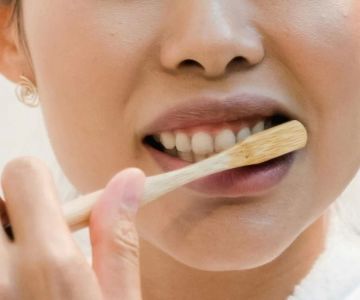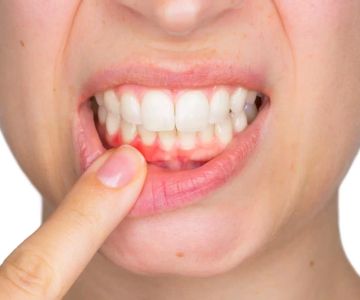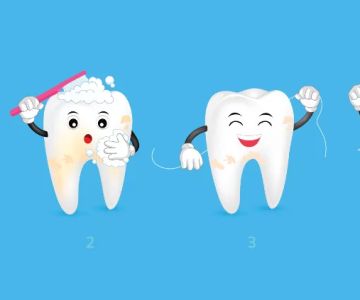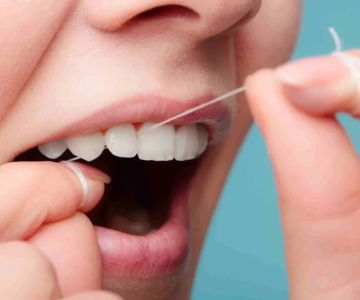Correct Brushing Technique: How to Brush Your Teeth the Right Way
- 1. Why Correct Brushing Technique Matters
- 2. Choosing the Right Toothbrush for Proper Brushing
- 3. Step-by-Step Guide to Correct Brushing Technique
- 4. Common Brushing Mistakes to Avoid
- 5. Extra Tips for Maintaining Optimal Oral Health
1. Why Correct Brushing Technique Matters
We all know that brushing our teeth is essential for maintaining good oral hygiene, but did you know that using the correct brushing technique can significantly impact the effectiveness of your routine? Brushing improperly can lead to plaque buildup, cavities, gum disease, and even tooth loss. While it may seem simple, there’s much more to brushing than just moving your toothbrush around in your mouth.
Using the wrong brushing technique can result in ineffective cleaning, leaving food particles and bacteria behind, or even causing damage to your gums and enamel. By adopting the correct brushing technique, you can ensure that your teeth are properly cleaned and your gums remain healthy.
2. Choosing the Right Toothbrush for Proper Brushing
One of the most important elements of the correct brushing technique is selecting the right toothbrush. Not all toothbrushes are created equal, and choosing the wrong type can hinder your ability to clean your teeth effectively.
For most people, a soft-bristled toothbrush is the best choice. Hard bristles can be too abrasive on your teeth and gums, leading to enamel erosion and gum recession over time. Electric toothbrushes are also an excellent option for ensuring proper brushing technique, as they often include timers and pressure sensors to guide your brushing habits. The key is to select a toothbrush that allows you to clean your teeth comfortably without causing damage.
3. Step-by-Step Guide to Correct Brushing Technique
Now that you know why proper brushing is important and how to choose the right toothbrush, let’s dive into the step-by-step guide on how to brush your teeth the right way:
- Step 1: Wet your toothbrush – Start by rinsing your toothbrush with water. If you’re using toothpaste, apply a pea-sized amount onto the bristles.
- Step 2: Hold your toothbrush at a 45-degree angle – Position your toothbrush against your gum line at a 45-degree angle. This ensures that the bristles reach both your teeth and gums, allowing you to remove plaque from both surfaces.
- Step 3: Use gentle circular motions – Gently move the brush in small circles, focusing on one tooth at a time. Avoid scrubbing or pressing too hard, as this can damage your gums and enamel.
- Step 4: Brush all surfaces of your teeth – Make sure to clean the outer, inner, and chewing surfaces of your teeth. Don’t forget the backs of your front teeth, which are often overlooked!
- Step 5: Brush for at least two minutes – It’s crucial to brush for the full two minutes to effectively remove plaque and bacteria from your teeth. Use a timer or an electric toothbrush with a built-in timer to ensure you’re brushing long enough.
By following these simple steps, you can ensure that you are brushing your teeth with the correct technique every time.
4. Common Brushing Mistakes to Avoid
Even with the best intentions, it’s easy to fall into bad brushing habits. Here are a few common mistakes people make when brushing their teeth:
- Brushing too hard: Pressing down too hard on your toothbrush can cause damage to your enamel and gums. Aim for a gentle brushing motion.
- Brushing for too short of a time: Many people only brush for 30 seconds or less, but it’s essential to brush for at least two minutes to clean all surfaces effectively.
- Not replacing your toothbrush regularly: Over time, toothbrush bristles wear out, making them less effective at cleaning. Replace your toothbrush every three to four months, or sooner if the bristles are frayed.
- Brushing too frequently: Brushing immediately after meals or acidic foods can wear down enamel. Wait about 30 minutes after eating before brushing to protect your teeth.
Avoiding these common mistakes will help you maintain the correct brushing technique and better protect your oral health.
5. Extra Tips for Maintaining Optimal Oral Health
In addition to using the correct brushing technique, there are a few other habits and tips you can adopt to further improve your oral health:
- Floss daily: Brushing alone can’t clean between your teeth. Flossing once a day helps remove plaque and food particles from areas your toothbrush can’t reach.
- Use mouthwash: A good mouthwash can help reduce plaque buildup, freshen your breath, and even fight gum disease.
- Maintain a healthy diet: A balanced diet rich in fruits, vegetables, and calcium can help keep your teeth and gums healthy. Avoid excessive sugary foods that contribute to tooth decay.
- Visit your dentist regularly: Regular dental checkups are essential for identifying early signs of issues like cavities, gum disease, or plaque buildup.
Incorporating these habits into your daily routine will ensure that your teeth stay healthy and strong for years to come.
By mastering the correct brushing technique and following these essential tips, you can keep your teeth clean, healthy, and free from cavities. To learn more about dental care and find products that can help maintain your oral health, visit Dentistry Toothtruth.







 Westgate Dental Arts3.0 (2 review)
Westgate Dental Arts3.0 (2 review) Coventry Family Dental4.0 (247 review)
Coventry Family Dental4.0 (247 review) Familia Dental3.0 (1028 review)
Familia Dental3.0 (1028 review) Dr. Daniel S. Fife, DDS4.0 (31 review)
Dr. Daniel S. Fife, DDS4.0 (31 review) Dentistry At Suburban Square: Michael I. Wollock, DMD4.0 (1228 review)
Dentistry At Suburban Square: Michael I. Wollock, DMD4.0 (1228 review) Comfort Care Dental4.0 (1156 review)
Comfort Care Dental4.0 (1156 review) The Importance of Oral Health Education During Pregnancy for a Healthy Pregnancy
The Importance of Oral Health Education During Pregnancy for a Healthy Pregnancy Why Skipping Dental Checkups Can Lead to Bigger Oral Health Problems
Why Skipping Dental Checkups Can Lead to Bigger Oral Health Problems Best Tips for Brushing Your Teeth Properly for Healthy Gums: Essential Techniques for Oral Health
Best Tips for Brushing Your Teeth Properly for Healthy Gums: Essential Techniques for Oral Health Advantages of Porcelain Dental Restorations
Advantages of Porcelain Dental Restorations How Can Diabetes Cause Tooth and Gum Problems? Preventing and Managing Oral Health Issues
How Can Diabetes Cause Tooth and Gum Problems? Preventing and Managing Oral Health Issues Healthy Habits for Promoting Good Oral Health and Hygiene: Tips for a Healthy Smile
Healthy Habits for Promoting Good Oral Health and Hygiene: Tips for a Healthy Smile